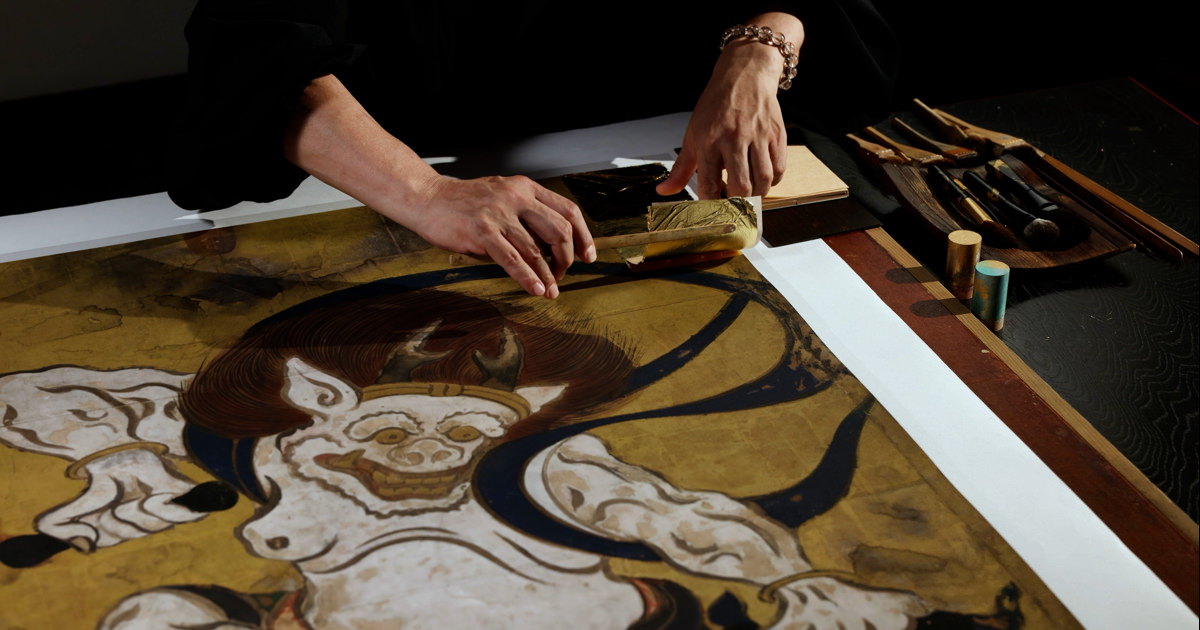Scenes in and around Kyoto, Uesugi version
High-resolution facsimiles
- Material
- printed, gold on washi paper
- Period of creation
- Tsuzuri Project Stage 1 2007–2008
- Recipient
- Yonezawa City Uesugi Museum(Yonezawa City)
Original
- Cultural property designation
- National Treasure
- Artist
- Kano Eitoku
- Historical era
- Azuchi-Momoyama (16th century)
- Material
- ink, color and gold on washi paper
- Medium
- Pair of six-fold screens
- Size
- Each screen H159.2 × W361.8 cm
- Collection
- Yonezawa City Uesugi Museum
Description
It is said that this painting was done when Eitoku was 23. Among the various stories surrounding its creation, it is best known as being a gift from Oda Nobunaga to Uesugi Kenshin. The right screen (shown below) shows the Shimogyo (lower capital) area, including the Imperial Palace, Kiyomizudera, and Toji, with the bustling Gion festival taking place in the center. The left screen shows the scenery of the Kamigyo area (upper capital), with large depictions of the Kubo and Hosokawa residences. A total of 2,485 people from all ranks of life, including priests, laity, nobility, soldiers, and commoners appear throughout the two screens. Together as a pair, the work captures the liveliness of the scene so well that one might be fooled into noticing the sounds and conversations of the individuals within. This work is a masterpiece in terms of both the works by Eitoku that still exist, and of the countless works that depict scenes in and around Kyoto.




